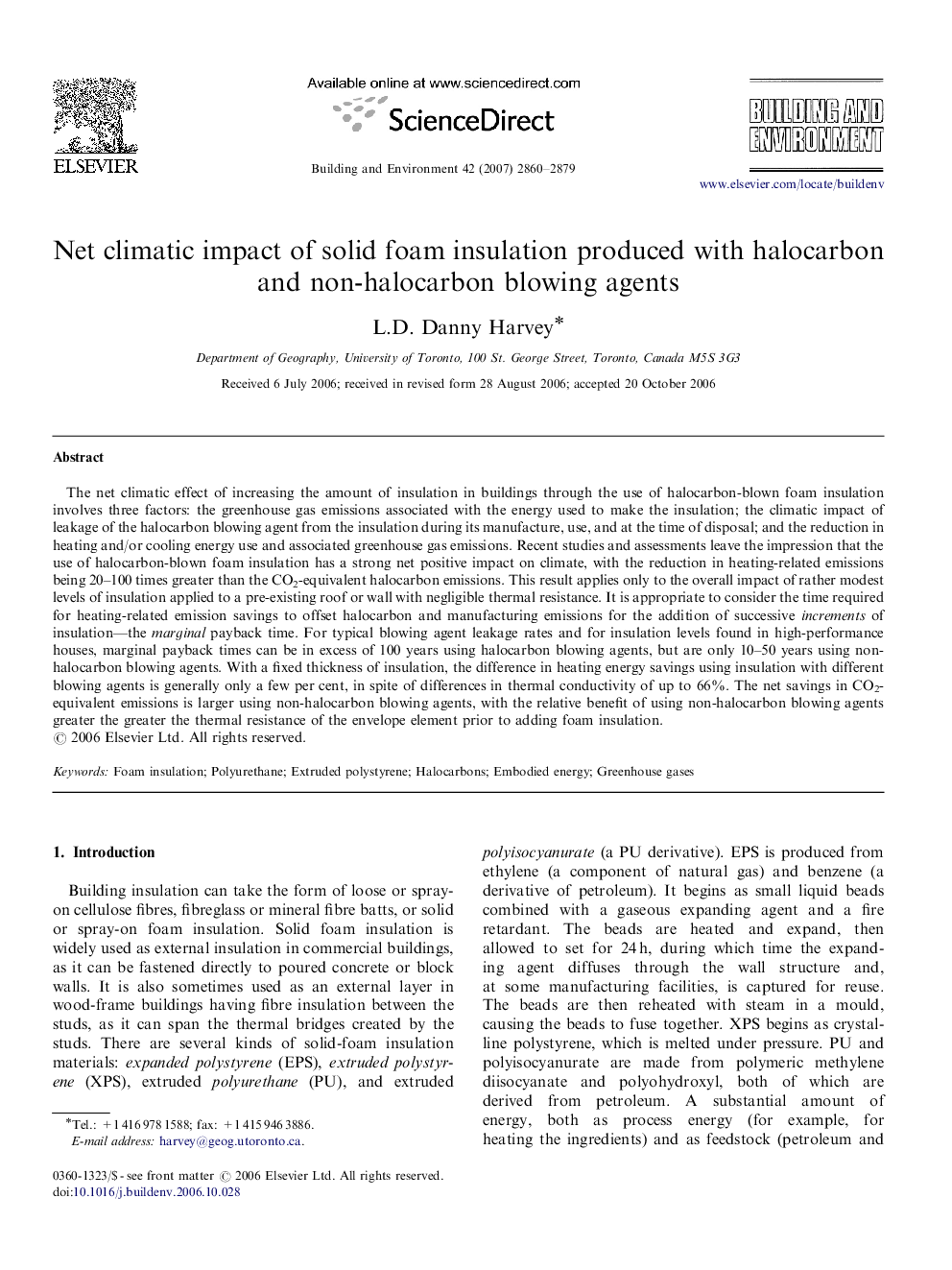| Article ID | Journal | Published Year | Pages | File Type |
|---|---|---|---|---|
| 249947 | Building and Environment | 2007 | 20 Pages |
The net climatic effect of increasing the amount of insulation in buildings through the use of halocarbon-blown foam insulation involves three factors: the greenhouse gas emissions associated with the energy used to make the insulation; the climatic impact of leakage of the halocarbon blowing agent from the insulation during its manufacture, use, and at the time of disposal; and the reduction in heating and/or cooling energy use and associated greenhouse gas emissions. Recent studies and assessments leave the impression that the use of halocarbon-blown foam insulation has a strong net positive impact on climate, with the reduction in heating-related emissions being 20–100 times greater than the CO2-equivalent halocarbon emissions. This result applies only to the overall impact of rather modest levels of insulation applied to a pre-existing roof or wall with negligible thermal resistance. It is appropriate to consider the time required for heating-related emission savings to offset halocarbon and manufacturing emissions for the addition of successive increments of insulation—the marginal payback time. For typical blowing agent leakage rates and for insulation levels found in high-performance houses, marginal payback times can be in excess of 100 years using halocarbon blowing agents, but are only 10–50 years using non-halocarbon blowing agents. With a fixed thickness of insulation, the difference in heating energy savings using insulation with different blowing agents is generally only a few per cent, in spite of differences in thermal conductivity of up to 66%. The net savings in CO2-equivalent emissions is larger using non-halocarbon blowing agents, with the relative benefit of using non-halocarbon blowing agents greater the greater the thermal resistance of the envelope element prior to adding foam insulation.
